Lake Hills Hotel Songnisan (레이크힐스 호텔 속리산)
0m 12940 2021-02-19
305, Beopjusa-ro, Boeun-gun, Chungcheongbuk-do
+82-43-542-5281
Lake Hills Hotel Songnisan is set against the lush natural surroundings of Songnisan National Park. With comfortable rooms, a banquet hall that can accommodate up to 400 people, and six smaller conference rooms, the hotel regularly hosts corporate seminars and large family gatherings alike.
Deongnim Sanchae Sikdang (덕림산채식당)
216.35257262280084m 22871 2024-03-18
287, Beopjusa-ro, Songnisan-myeon, Boeun-gun, Chungcheongbuk-do
043-543-4846
Deongnim Sanchae Sikdang is a tile-roof restaurant located next to the parking lot of Songnisan Mountain’s Beopjusa Tourist Complex. It serves sanchae jeongsik (wild vegetable dish set menu) made with mushrooms and vegetables sourced from Songnisan Mountain, deodeok gui jeongsik (grilled deodeok set menu), beoseot jjigae jeongsik (mushroom jjigae set menu), sanchae bulbaek jeongsik (wild vegetable and bulgogi set menu), bibimbap, and haemul pajeon (seafood and green onion pancake). The restaurant is close to tourist sites like Songnisan Sculpture Park, Orisup Trail, and Beopjusa Temple.
Kyunghee Sikdang (경희식당)
434.0618644658288m 24482 2024-02-26
11-4, Sanae 7-gil, Songnisan-myeon, Boeun-gun, Chungcheongbuk-do
Kyunghee Sikdang is a Korean table d'hote restaurant with 70 years of history, located at the entrance to the Beopjusa Temple in Songnisan Mountain. The dishes are prepared with ingredients sourced from Songnisan Mountain, vegetables grown by the restaurant, and in-house sauces. They come with nearly 40 side dishes, such as sogogi pyeonyuk (boiled beef slices), dureup namul (fatsia shoot salad), gosari (bracken), gam jangajji (pickled persimmons), ssari beoseot (coral mushroom), meowi namul (butterbur salad), pyogojeon (pan-fried battered golden oak mushrooms), bam jorim (braised chestnuts), and deulkkae songi twigak (young perilla branch chips). The restaurant’s mustard sauce and gangdoenjang (seasoned soybean paste) are made according to its secret recipe.
Boeun Beopjusa Temple [UNESCO World Heritage] (보은 법주사 [유네스코 세계문화유산])
963.054793561007m 39255 2021-10-23
405, Beopjusa-ro, Boeun-gun, Chungcheongbuk-do
+82-43-543-3615
Built in 553 during the 14th year of Silla King Jinheung's reign, Beopjusa Temple is located on Songnisan Mountain. However, many of the original buildings were destroyed during the Imjin War (1592-1598), with the current structures having been rebuilt in 1624. The temple features many beautiful and important Buddhist relics and artworks, centered around the main hall, Daeungbojeon Hall.
Songnisan Special Tourist Zone (속리산 관광특구)
968.7014472316073m 4172 2022-08-22
405, Beopjusa-ro, Boeun-gun, Chungcheongbuk-do
+82-43-540-3393
With Songnisan National Park at its center, Songnisan Special Tourist Zone offers picturesque scenery and cozy resorts. At 1,058 meters above sea level, Songnisan Mountain is one of the 8 scenic wonders in Korea, and its steep peaks and deep valleys create a fascinating view. A variety of hiking trails that set out from Beopjusa Temple offer superb mountain scenery from every angle.
A tourism complex around Songnisan National Park offers various types of accommodations, and the area's attractions, such as Beopjusa Temple, Seowongyegok Valley, Mansugyegok Valley and Solhyang Park are not to be missed. In fact, the mountain is a habitat for rare animals and plants, including flying squirrels and Berchemia Berchemiaefolia, and is called a “treasure house of natural resources.”
The convenient accessibility should be noted as well. The highway between Dangjin and Yeongdeok goes through the zone, and it takes only 30 minutes from Cheongju International Airport. This helps foreign tourists from China, Taiwan and Singapore as well as Korean visitors to easily access the zone.
A variety of events, including the Songni Festival, the Songnisan Maple Music Festival and the Songnisan Hiking Festival, are held every year, and the largest number of tourists visit in autumn to appreciate a view of the mountain tinged with red.
* Current State of Songnisan Special Tourist Zone
1) Districts Covered: Areas around Sangpan, Jungpan, Galmok and Sanae-ri, Songnisan-myeon, Boeun-gun, Chungcheongbuk-do
2) Area: 43,745,528 ㎡
Jeongipum Pine Tree (보은 속리 정이품송)
2.1 Km 11682 2022-09-07
Sangpan-ri, Boeun-gun, Chungcheongbuk-do
+82-43-540-3394
This 600-year-old pine tree stands at the entrance to Songnisan Mountain in Boeun-gun, Chungcheongbuk-do. This old tree, designated as Natural Monument No. 103, is 15 meters in x_height and 4.5 meters in girth. Its branches stretch 10.3 meters to the east, 9.6 meters to the west and 10 meters to the north. Shaped like an open umbrella, this pine tree has long been the symbol of Songnisan Mountain, and has even been awarded the title of a Jeongipum grade official of the Joseon Court.
* Legend
King Sejo visited Onyang Hot Springs and Songnisan Mountain in 1464 to cure an illness. While passing under this tree, he looked up and saw that his royal sedan chair was about to be ensnared in the tree’s branches. As he called for his bearers to look out, the branches suddenly lifted for the royal procession to proceed. On his way to Seoul, King Sejo was also able to take shelter from a rain shower under this tree. Therefore, he bestowed upon the tree the ministerial rank of Jeongipum.
Songnisan National Park (Chungcheongbuk-do Section) [속리산국립공원(충북)]
4.5 Km 61413 2024-03-15
Sangpan-ri, Songnisan-myeon, Boeun-gun, Chungcheongbuk-do
+82-43-542-5267
Situated in the heart of the Sobaek Mountain Range, Songnisan National Park encompasses the majestic Songnisan Mountain, standing at 1,057 meters, and the picturesque Hwayanggyegok, Seonyugyegok, and Ssanggok Valleys. Designated as a National Park in 1970, this natural sanctuary is celebrated for its stunning landscapes and unique rock formations. Key highlights include the awe-inspiring peaks of Cheonhwangbong, Munjangdae, and Birobong. Additionally, the park is home to historical and cultural treasures such as Beopjusa Temple, Seongbulsa Temple, and the ancient Gyeonhwonsanseong Fortress.
Mansugyegok Valley (만수계곡)
5.7 Km 57251 2024-02-26
136, Mansu-gil, Songnisan-myeon, Boeun-gun, Chungcheongbuk-do
Mansugyegok Valley is a 4 km-long valley fed by the Samgacheon Stream, which originates from Cheonwangbong Peak in Songnisan Mountain and flows into Samga Reservoir. Its name refers to how it has enjoyed tens of thousands of years of age. Its clear water and lush forests make it a popular summer and forest bath destination. The summit of the Songnisan Mountain can be reached along the valley. There’s also a trail that leads to the Beopjusa Temple of Songnisan Mountain.
Seowongyegok Valley (서원계곡)
7.1 Km 48346 2024-02-26
491-4, Jangan-ro, Jangan-myeon, Boeun-gun, Chungcheongbuk-do
Seowongyegok Valley is fed by the Samgacheon Stream, which originates from Songnisan Mountain and flows through Samga Reservoir in an S-shaped curve. It is relatively gentle in slope, and the stream is quite wide. The area is home to the 600-year-old Seowon-ri Pine Tree. Aside from enjoying the beautiful view of the area, one can also swim in the valley in summer.
Songnisan National Park (Gyeongbuk Section) (속리산국립공원(경북))
7.2 Km 17158 2021-05-14
Hwabuk-myeon, Sangju-si, Gyeongsangbuk-do
+82-43-542-5267
On Songnisan Mountain is a rock summit 1,054 meters above sea level called Munjangdae Peak. The peak is so broad that 50 adults can sit on it at the same time. Among the rocks there is Seokcheon Pond, which never dries up. The peak used to be called “Unjangdae” because the summit is always covered with clouds and mist. Legend says that King Sejo of Joseon dynasty supposedly recited a poem on the summit.
Munjangdae has a great view of Cheonhwangbong Peak, the highest peak of Songnisan Mountain. Visitors can also see Gwaneumbong, Chilseongbong, Sirubong, Tugubong, Munsubong, and Birobong peaks. In autumn, visitors can enjoy views of breathtaking fall foliage along the trail, which begins at Hwabuk-myeon, Sangju. There are also many cultural heritage sites including Janggakpokpo Falls, Seongbuksa Temple, Osongpokpo Falls and Gyeonhwonsanseong Fortress.
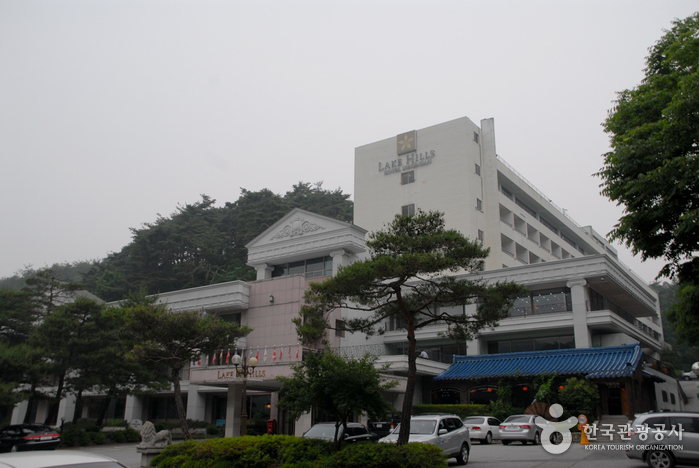
![Boeun Beopjusa Temple [UNESCO World Heritage] (보은 법주사 [유네스코 세계문화유산])](http://tong.visitkorea.or.kr/cms/resource/58/1731558_image2_1.jpg)
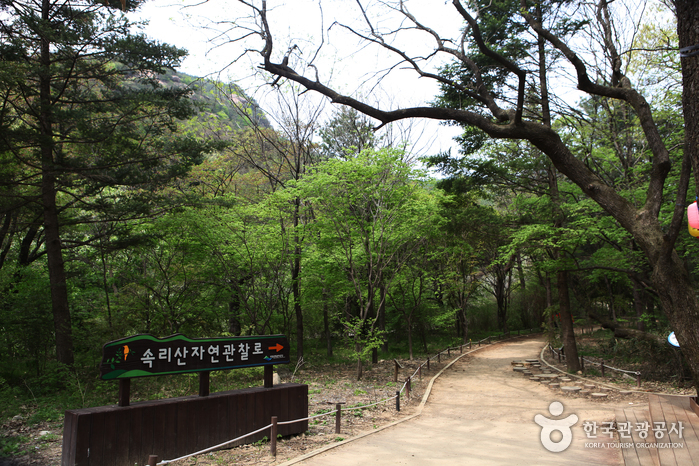
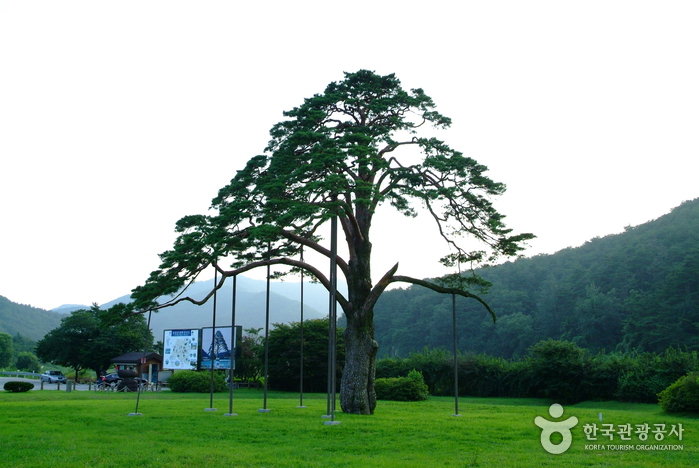
![Songnisan National Park (Chungcheongbuk-do Section) [속리산국립공원(충북)]](http://tong.visitkorea.or.kr/cms/resource/04/2677704_image2_1.jpg)
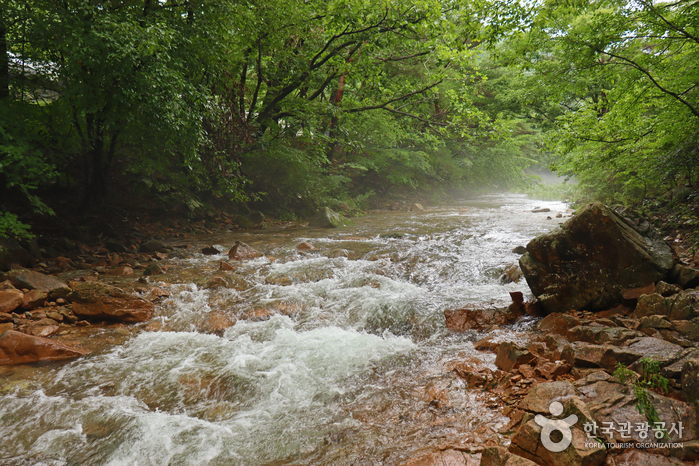
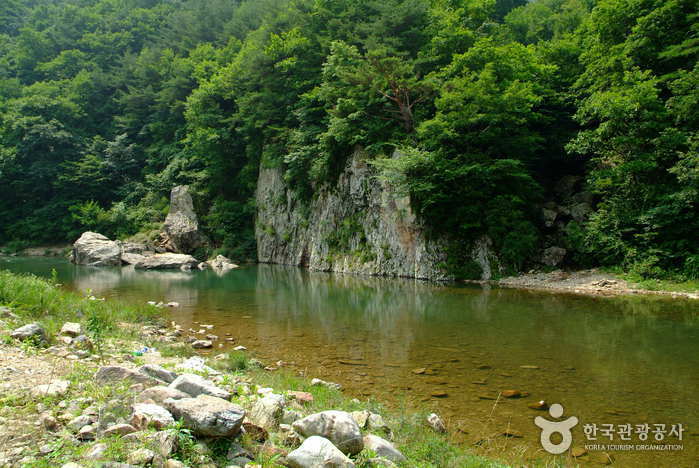
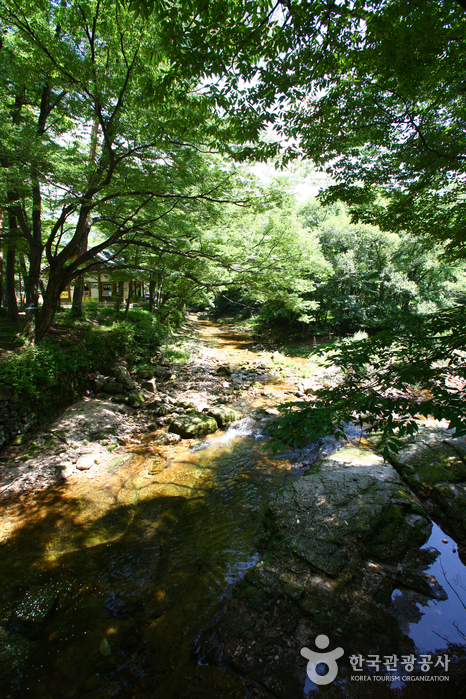
 English
English
 한국어
한국어 日本語
日本語 中文(简体)
中文(简体) Deutsch
Deutsch Français
Français Español
Español Русский
Русский